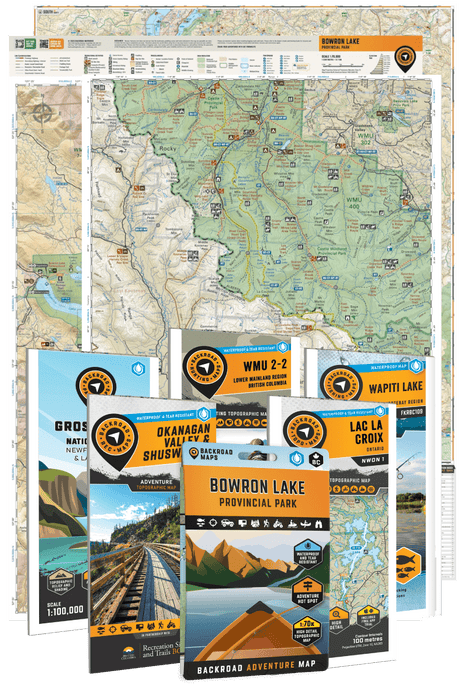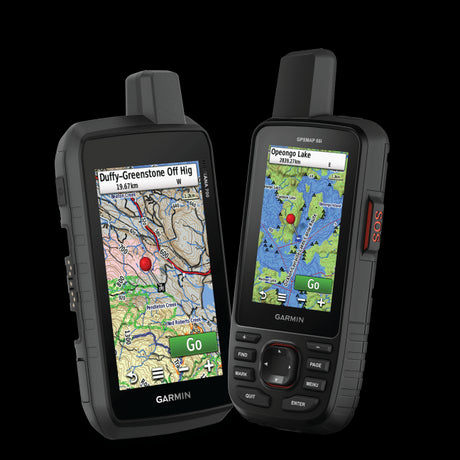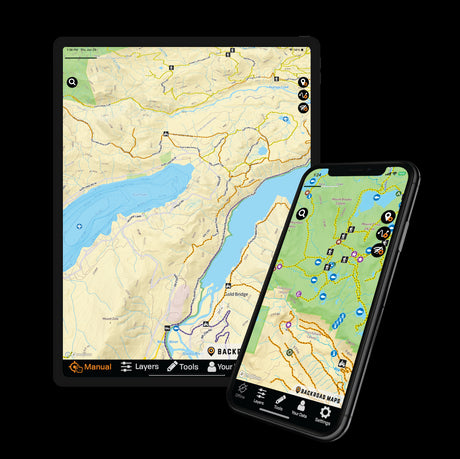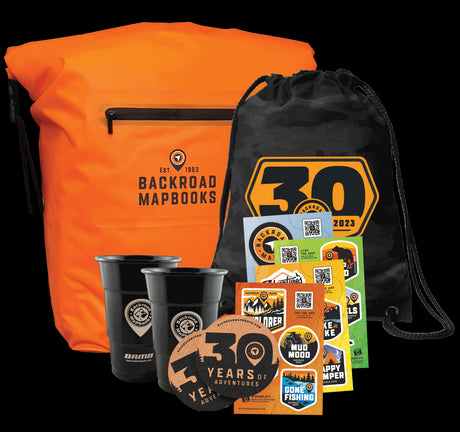Backcountry travel takes a bit of preparation, no matter the season, because you always want to make sure that you are ready for whatever may happen. However, packing for a backcountry trip come wintertime requires a little extra attention. With below freezing temperatures, unpredictable blizzards and the possibility of avalanches, you do not want to head out for any winter adventure ill-prepared.
Whether you are headed out for an afternoon on the mountain or a couple of days immersed in the backcountry, being prepared for any winter hazard is a must. In the dead of winter, it can take rescue crews a long time to get to you, so being prepared with what you need, when you need it could be the important difference between life or death.
Do not let the daunting thought of thoroughly planning ahead keep you from exploring the beautiful Canadian backcountry this winter! We have put together a checklist for all your winter backcountry travel needs, whether you are driving, hiking, camping, snowshoeing, skiing or backpacking! Keep checking off bucket list adventures this season easily with our Winter Travel Checklist!
Before You Pack
Before you even start thinking about taking a backcountry trip in the winter, you must make sure you are not only packed for any emergency, but you know what to do. Some key questions to ask yourself are:
☐ Are you an experienced winter adventurer, or are you traveling with experienced backcountry explorers?
☐ Do you know and understand the possible hazards of avalanches or other encounters?
☐ Do you know what to do if you are caught in an avalanche?
☐ Are you in fit condition to be exercising in high altitudes in the cold weather?
☐ Do you know how to prevent and what to do in the case of frostbite or hypothermia?
☐ Does someone (not on the trip) know where I am going and have I left them a detailed itinerary?
Safety
Before you drive, hike, snowshoe, snowmobile, camp or travel anywhere this winter, you need to make sure you have the essential safety supplies. While most items on the list are things you hope to never have to use, in a situation where you NEED to use it, you will be thankful for thinking ahead.
☐ Compass
☐ Topographic Map of the area you’re traveling
☐ GPS Unit with Backroad GPS Maps
☐ Extra day's supply of Food
☐ Waterproof matches/lighter
☐ Emergency water
☐ Headlamp – with extra batteries
☐ Knife
☐ Multi-Tool
☐ First aid kit
☐ Signalling whistle
☐ Emergency blanket
☐ Avalanche beacon or probe
☐ Ice axe
☐ Crampons
☐ Foldable shovel
☐ Two-way radios
Driving
In a winter blizzard, road conditions can change in the blink of an eye, whether you are cruising down the highway or bounding along a backcountry service road. Aside from making sure your car is in good condition to drive, with proper winter tires and essential maintenance, here is our checklist for what you should have on hand in your vehicle.
☐ Snow shovel
☐ Broom
☐ Ice scraper
☐ Abrasive material (sand or kitty litter)
☐ Jumper cables
☐ Flashlight
☐ Roadmaps
☐ Antifreeze
☐ Windshield washer fluid
☐ Tow rope
☐ Road flares
Clothing
Though you may be working up a sweat while adventuring through the backcountry, as soon as you stop moving to set up camp or for a bite to eat, your body temperature will cool down remarkably. It is important to dress appropriate for the weather, as well as come prepared with extra dry clothes in case the snow or sleet soaks yours. Here is our recommendations for what you should have on and with you on your winter backcountry adventure.
☐ Base layer: wicking underwear
☐ Mid layer: insulating jacket/vest/pants
☐ Shell: rain jacket (or soft shell)
☐ Rain pants
☐ Dry clothing
☐ Goggles
☐ Waterproof overmitts
☐ Jacket
☐ Vest
☐ Pants
☐ Gloves
☐ Hat
☐ Insulated boots
☐ Main socks, liner socks, spare socks
☐ Buff
*DO NOT wear any cotton as it does not hold heat as well as other fabrics, and gets wet extremely easily.
Camping Gear
What you pack to make your campsite comfortable in the winter will vary depending on if you are backpacking or car camping. However you plan on spending the night, you will want to be prepared in order to stay warm!
☐ Tent with spare tent poles
☐ Snow stakes
☐ Synthetic/down sleeping bag (rated 0 to -15°C/5°F)
☐ Sleeping pad or mat (must be closed cell or “therma-rest” for insulation
☐ Extra fleece liner or blanket (optional)
Comfortable Necessities
Though these may not be “life-saving” necessities, they are handy to have to keep yourself comfortable through your adventures this winter.
☐ Lip balm
☐ Sunscreen
☐ Sunglasses
☐ Camera
☐ Hand warmers
☐ Toilet paper
☐ Toothbrush
☐ Binoculars
*Please note that this is just a recommended safety checklist and you may need to add other items depending on your personal preference or needs.
Adventure should not have to freeze to a halt just because of the cold temperatures! With this easy checklist you will be off adventuring in the winter backcountry in no time!







